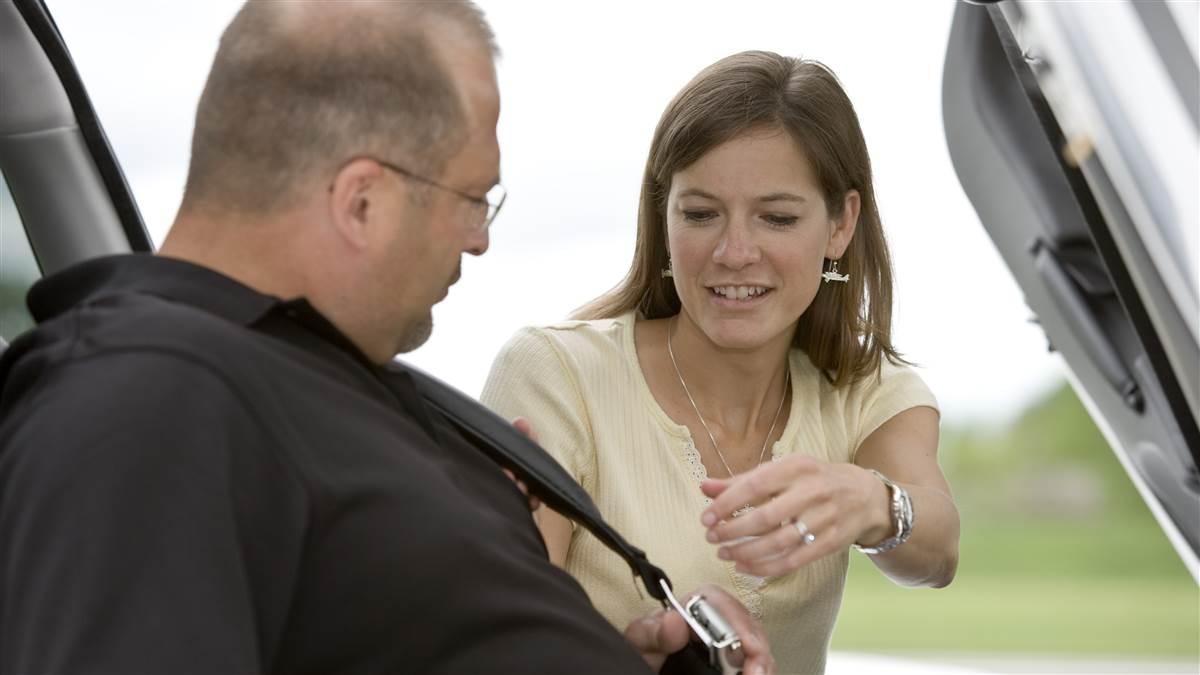ASI News: Boarding your first passenger?
Take a professional approach to a complete passenger briefing

This may suffice during training, but before your checkride—and when you’re ready to provide rides to friends and family—review FAR 91.107 thoroughly. Among other things, the regulation requires you to brief your passengers on how to fasten and unfasten seat belts (and if installed, shoulder harnesses) and to notify passengers to fasten these during taxi, takeoff, and landing. Of course, there’s more to making everyone comfortable and safe.
Are you good to go?
Nonpilot passengers depend completely on your ability to assess go/no-go decisions based on your prudent self-assessment (IMSAFE), the weather, the airplane, how comfortable the ride will be, and potential situations that could jeopardize the safe outcome of the flight. So, take stock of your health, skills, and proficiency. Respond honestly to your assessment and take steps to address any areas that need to be resolved.
Passenger comfort
Consider your flying companions’ comfort before and during the flight. Brief them about what to expect. Suggest they bring sunglasses and dress comfortably and appropriately. Remind them about the lack of toilet facilities in flight. Anticipate weather conditions that could affect their comfort, such as hot and humid summer days or gusty winds and turbulence.
It’s a go!
On the day of the flight, give an update on expected conditions. Discuss ramp safety, including the danger of a spinning propeller, and help your passengers use the appropriate handholds and stepping areas to board the aircraft. Make sure they know how to adjust and lock their seats and explain the use of seat belts.
Cabin briefing
Once everyone is seated comfortably and securely, demonstrate how to open and close the doors. Show the location of airsickness bags, emergency exits and windows, and emergency equipment—such as fire extinguishers and survival gear—and how to use these. Explain the need for a sterile (quiet) cockpit during taxi, takeoff, approach, and landing. Make sure they know to tell you if they feel ill, so you can land if needed. If this is a passenger’s first flight, describe how the engine sound may change during climb, cruise, and descent, and that gear retraction/extension might make a brief noise.
Review the AOPA Air Safety Institute’s Critical Information: The Passenger Safety Briefing video, which offers suggestions to create or improve briefings and how to broach the sensitive issue of dealing with an abnormal or emergency situation. Also, download and customize the Emergency Equipment Card and place copies in reach of each passenger.
If you plan carefully and are considerate of your passengers’ comfort level before and during the flight everyone will reap tremendous rewards. Now, go share your flying passion and elevate your own flying experience at the same time.
NOTICE OF ANNUAL MEETING OF MEMBERS—The annual meeting of the members of the Aircraft Owners and Pilots Association will be held at 9 a.m. on Thursday, September 6, 2018, at the headquarters of AOPA, 411 Aviation Way, Frederick, Maryland, 21701, located on Frederick Municipal Airport (FDK), for the purpose of receiving reports and transacting such other business as may properly come before the meeting, specifically including the election of trustees. If you are not able to attend, but would like to appoint your voting proxy, go online (www.aopa.org/myaccount) or call 1-800-872-2672. —Kenneth M. Mead, secretary



